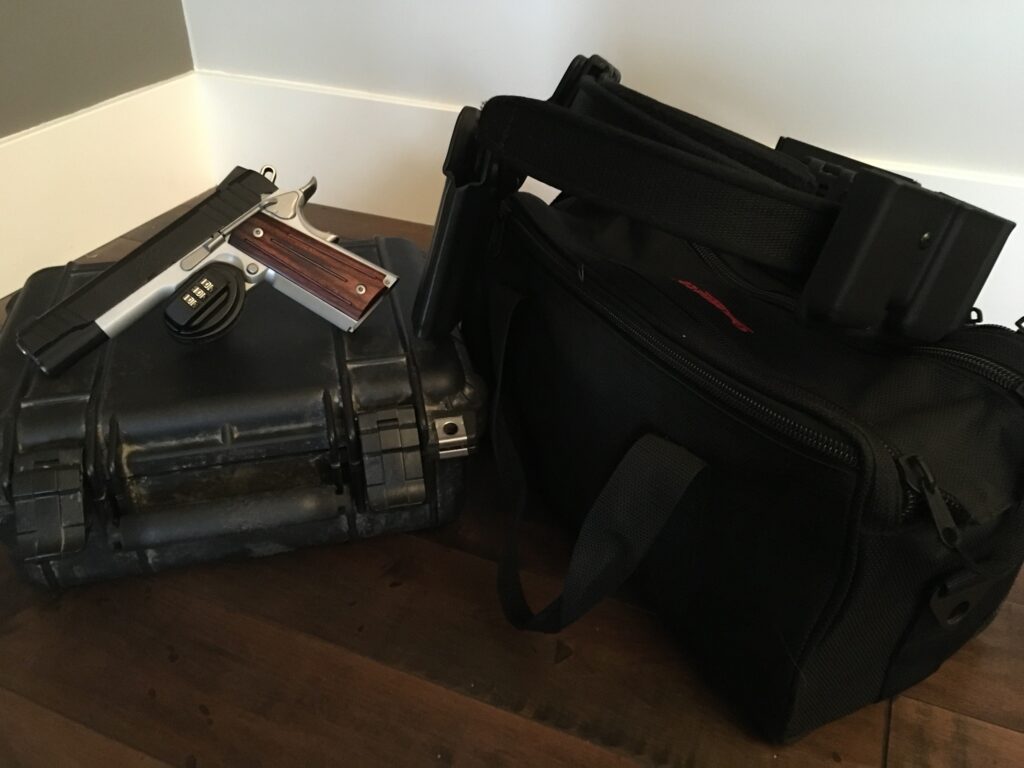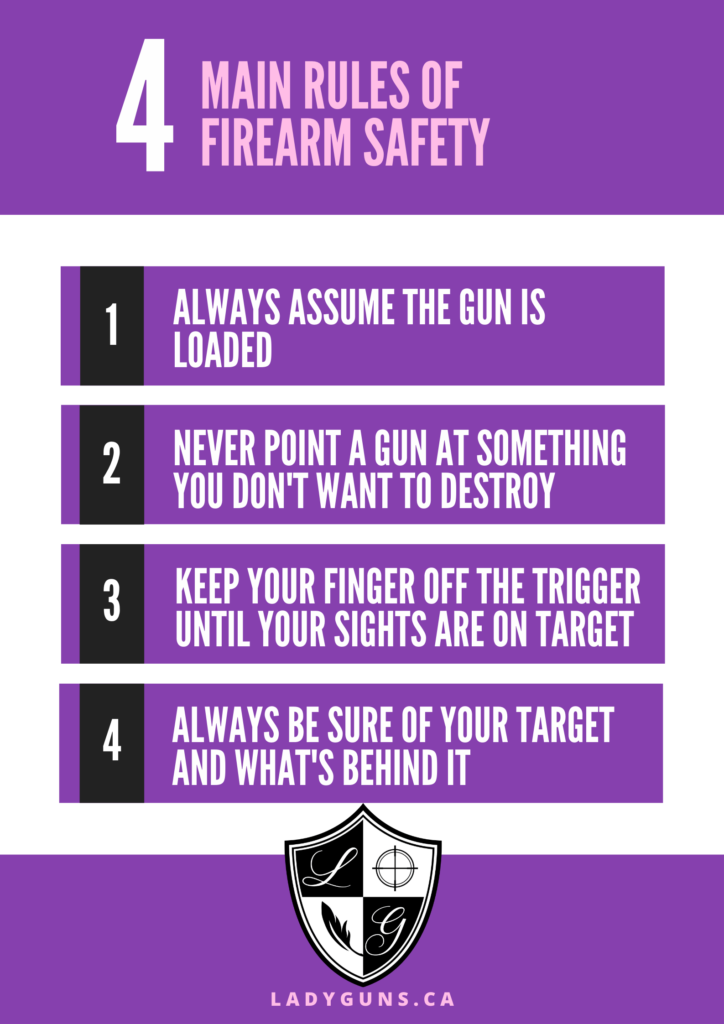There is nothing more important than gun safety. Being a gun owner or user means that you have made a commitment to safety and responsible gun ownership. Here are the 4 main rules of firearm safety, how to store your guns and how to transport them according to Canadian law, and some general range etiquette.
The Rules
The 4 rules are something that you will likely see posted at any shooting range you go to. They are the fundamental tenants of gun safety and should be followed in all settings, even at home.
1. Always assume the gun is loaded.
We’ve all heard the stories of someone who didn’t check to ensure their gun wasn’t loaded and accidentally discharged a shot. By assuming the gun is loaded, you ensure the proper attention and awareness is taken while handling firearms.
2. Never Point a gun at something you don't want to destroy.
Further to rule number 1, you never, ever, EVER, point a firearm at anyone or anything you wouldn’t want to shoot.
3. Keep your finger off the trigger until your sights are on target.
Being in control of your firearm at all times is key to firearm safety and knowing where your finger is in relation to your trigger is important to this.
4. Always be sure of your target and what's behind it.
Don’t be fooled by the movies. Bullets are not stopped by walls or furniture. When you are shooting your target, assume that the bullet or shot will travel beyond that point and ensure that there is nothing you don’t want to shoot behind it.
Safe Storage of Firearms
Canadian law requires that all firearms be stored unloaded and locked.
- Non-restricted firearms are required to have a trigger lock or be locked in a gun safe (or cabinet or room that is difficult to break into).
- Restricted firearms must have a trigger lock or locking device so the firearm can not be fired AND be locked in a gun safe, vault or room modified specifically to store firearms safely.
- Ammunition must be stored separately or locked up.

Safe Transportation of Firearms
Canadian law requires that all firearms must be unloaded while transporting.
- You do not need to lock a Non-restricted firearm. Keep them in a soft or hard case out of sight.
- When transporting a Restricted firearm you must first have an Authorization to Transport (call your Chief Firearms Officer or apply for an ATT here (you must have an RPAL for this – learn about the different classifications here). A trigger lock AND a locked, sturdy, non-transparent case must be used. You have to travel a reasonably direct route to an approved facility.
- If you must leave your firearms in your unattended vehicle, you must put the firearms or cases carrying restricted firearms in the locked trunk. If the vehicle does not have a trunk, you must put them out of sight and lock the vehicle.
**Please Note: There are specific rules for transporting restricted firearms. Be sure you educate yourself!**
Range Etiquette
All ranges will have their own set of rules and bylaws you must follow. If you have any questions, make s sure to ask before using the range.
Here are a couple general rules that are considered proper etiquette on the gun range:
- Treat your guns as if they are loaded. (notice a theme here?)
- Never point a firearm at something you are not willing to destroy.
- Keep your finger off the trigger until your sights are on target.
- Always be sure of your target, what is in front and beyond it.
- When traveling from 1 stand to the next, lock your action open and carry your firearm so that other people can see that your gun is unloaded.
- Never cross the firing line.
- If you need to go down range, wait for a cease-fire and instructions from the designated range officer.
- Pick up after yourself. Try to leave your space cleaner than how you found it.
- Respect the other shooters on the range. If you are waiting to shoot, don’t talk loudly and be a distraction to the person on the line.
Final Word
You are responsible for your safety and the safety of everyone around you. Being aware of your surroundings is not enough and if you see someone who is not following the rules, you owe it to yourself and others to point it out to a range officer and/or instruct them on gun safety. If you see something unsafe, call a cease-fire.
